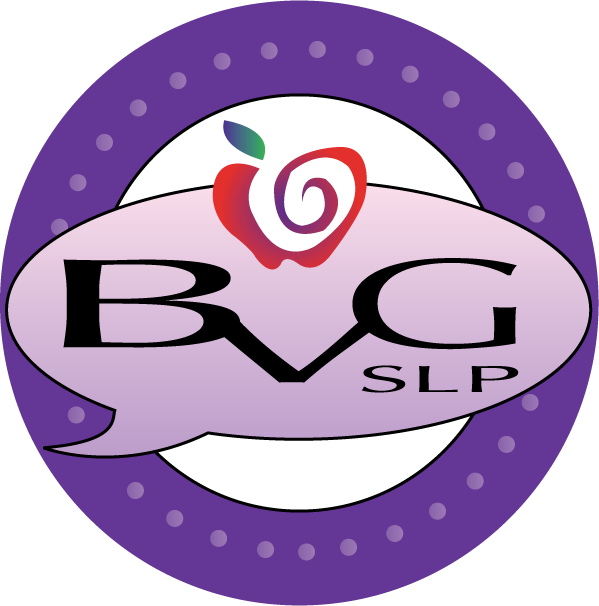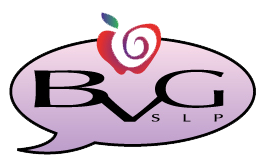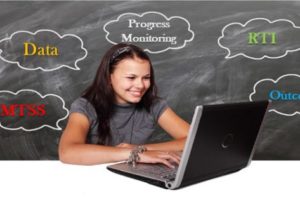Data, data, and even MORE data! Data collection is extremely important for progress monitoring. Whether you are a fellow Speech Language Pathologist, SPED teacher, classroom teacher, the RTI, MTSS coach, or an administrator, you understand the importance of collecting and maintaining accurate data. Each year, during the busy back to school rush, there are a few of my blog posts that get LOTS of traffic. One of my most popular older posts was all about collecting GOOD DATA EARLY. It has been several years since I updated the post so, I decided now would be a great time to republish it. I am hopeful that you will find a few tips and tricks to help you develop a system. Remember, your system needs to work well for YOU and your students.

In order to get off to a great start to the school year, setting up a solid data collection system at the onset is invaluable. Data drives SO MANY decisions related to referrals, testing, adding services, and/or dismissing services. Things to keep in mind as you navigate the start to the year are:
- Be on a mission to be accurate.
- Be consistent in your collection methods.
- House your data in a secure place for ease of tabulation and analysis. Try to avoid the little sticky notes all over your desk for progress monitoring – we ALL have been there!
Although progress monitoring goes by many different names (Response to Intervention – RTI, Multi-Tiered System of Support – MTSS), the ultimate goal is the same. Our mission should always be to collect good data to determine if our intervention methods are working. It is our responsibility to ensure that the differentiated instruction efforts are effective. More importantly, when the instruction is NOT working it is imperative to catch it early enough to make the necessary adjustments.
So what does GOOD data look like?
In a perfect scenario, we would be able to work one on one with every student and take data on how they perform during each session. The focus would be placed entirely on their individual needs. Unfortunately, the demands of the classroom and the critical shortage of SLPs in the school system makes it very difficult to work with students 1:1. We have to group students and work on a variety of targets within a small window of time. For this reason, it is extremely imperative to make each session count while providing as many opportunities to address the necessary targets.
As an SLP, one of the biggest challenges we face each school year is scheduling. It can be frustrating and difficult to fit all of our students into our schedules with so many restrictions placed on blocks of time that they cannot be pulled out of classroom instruction. Although it is a tedious process, it is always achievable and we do get it done in the most efficient way possible. We do make every effort to group students with similar deficits and grade levels together (i.e. language groups, articulation groups, pragmatic groups, etc.) however, at times mixed groups are necessary.
Once scheduling is accomplished, as soon as we start working with our students we should be thinking about data collection and progress monitoring. The sooner we are able to gather baselines, the better. I personally aim to try to get baseline measures within the first few sessions. I hold my students accountable and make them record their goals and targets for a better understanding of why they are receiving speech and language services.
Establishing Baseline Measures
Working as a teletherapist, has made data collection significantly easier. With smaller groups, generally 1:1, 2:1 or at a max 3:1, I can easily hone in on each individual student. However, if you are working with larger groups, I would recommend pulling students with similar goals into smaller subgroups while allowing your other students to work independently on an activity. Present your smaller subgroups with an activity that will allow you to give each student at least twenty opportunities (more, if feasible) to respond and record their accuracy percentages.
With baselines established it is now time to continue to gather data over time to get a clear picture as to whether your efforts are effective. Again, with smaller groups, it is much easier to collect data during each session. Unfortunately, the reality is most SLPs and teachers have to work with larger groups and it may not be possible to get reliable data during each session on each student.
When this is the case, it would be a good idea to set aside data collection days for your students and be consistent with obtaining data points on their scheduled data collection day. As you start to record data, be sure to identify the date it was collected and the resource you utilized during the session. This will aid in maintaining a more concise measure to pinpoint the specific things that are working and what may in fact not be working (progress monitoring).
Where should I house my data?
When I worked in the traditional brick and mortar setting, I maintained a binder with data sheets for each of my students. I organized this binder within the first few weeks of therapy. It was imperative to make sure that I started recording data as soon as I gathered my baseline measures. My goal was to schedule data days for each group. I aimed to informally collect data during each session and more formally collect data weekly. I recorded the percentages in my thick 3” binder and it was extremely useful to me during each MTSS/RTI meeting, IEP meetings, discussions with teachers and parents. This binder was especially useful when completing my quarterly progress reports. However, I am a very visual person and find it easier to show parents, teachers, and administrators the progress (or lack thereof) that my students are making using graphs.
Using graphs to provide a visual illustration is extremely beneficial. I maintain an Excel spreadsheet and I have made them completely editable. They can be purchased from my website HERE or my Teachers Pay Teachers. This tool is very user-friendly and just requires you to input your data points with the dates that data was collected. From there, the graphs will auto-populate to monitor progress in an easy to read, visual way. I find that parents, teachers, and administrators appreciate this visual representation and have a better understanding of their students’ overall performance.

When you purchase this resource, you will receive a step-by-step guide. This guide will instruct you on setting up your progress monitoring for each student. Again, I find it most effective to start recording data and inputting your data points as soon as possible. To make presentation easy, each graph has four data points per quarter and are color coded. Share them as an accompaniment to your quarterly progress reports to keep parents informed. These graphs are a great way for you as an SLP, or teacher, to visually assess progress.
Data is imperative to identify what is effective and what may not be effective for our students. This data helps guide our instruction. It specifically aids in allowing us to differentiate for students who may still need additional support beyond small group instruction. If no progress is being made, after a few sessions, it is time to assess the method of instruction. Determine how it can be modified to best assist our students. We may find that some of the students within the group are making great gains. For them no modification is necessary. Maintain the method of instruction because the data supports it and it is working for the students. However, for students within the same group who may not be making progress, they are in need of further differentiation.
What to do when progress is NOT being made?
At this point, the question becomes, what is not working for them? Analyze the situation and adjust your instruction to specifically reach them with a more individualized plan. Could it be that they would benefit from increased repetitions? Try this to determine if it works for them. Have the student listen to your instructions presented more than once. Then require them to paraphrase or repeat back to you the expectation. Another possibility could be presenting the content in smaller more digestible bites or chunking. For instance, if you are reading a passage or book, stop more frequently to assess comprehension. It could be that they require clarification after each paragraph and in some cases after each sentence.
Further differentiation could include providing visual cues. Many students benefit from seeing a visual representation of a target vocabulary word. They are able to make better connections with their prior knowledge. When they “see” what it is that the group is discussing. I like the saying, “a picture is worth a thousand words.” This is very true with a lot of my students. I take it a step further by saying, if a picture is worth a thousand words, a video is worth a million. With so much technology at our fingertips, I love to incorporate it into instruction by using videos. Videos are an excellent precursor to a new lesson or as a final step for better retention.
As we monitor the progress of our students, it is extremely important to constantly analyze our methods of instruction. Frequently take steps to modify instruction as appropriate to ensure that ALL of our students are making gains. Every student learns differently! Therefore, it is our responsibility to capitalize on their strengths while honing in and helping them to improve their weaknesses. The best way to achieve this is through frequent and efficient data collection. Consistent, precise data will give us a better representation of how and where we need to make adjustments.
What are customers saying about the Progress Monitoring Graphs?

This is absolutely a wonderful resource and one that I plan to use for years! This is going to be a wonderful visual presentation for parents and staff. Thank you. ~Amy K.
Such a time saver. And the visuals are so helpful for decision making, as well as demonstrating client progress. ~Danielle M.
This is very helpful when trying to show parents and kids how much progress they have made. More importantly it has made writing progress reports so much faster. ~Amanda S.
Not only is this a great product, but the seller is great to work with! I saw another product that she had created and needed it tweaked to fit my needs. She took the time to ask me questions and created it for me! Thank you so much! ~Dawn H.





Leave a Reply
Your email is safe with us.